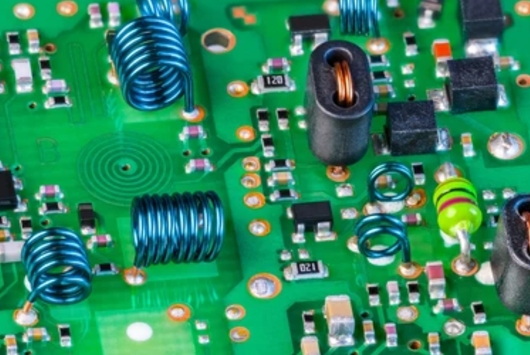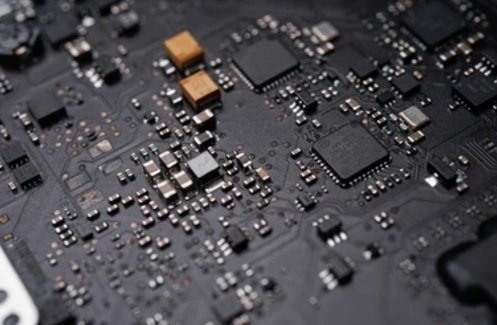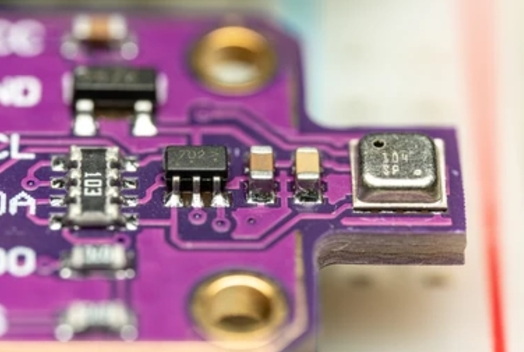Content Menu
● Introduction
● What is SMT?
>> The Evolution of SMT
● The Role of SMT Machines
● Types of SMT Machines
>> 1. Pick and Place Machines
>> 2. Solder Paste Printers
>> 3. Reflow Ovens
>> 4. Inspection Machines
>> 5. Selective Soldering Machines
● How SMT Machines Work
>> Step 1: Design Preparation
>> Step 2: Solder Paste Application
>> Step 3: Component Placement
>> Step 4: Reflow Soldering
>> Step 5: Inspection
● Advantages of Using SMT Machines
● Challenges in SMT Technology
● Future Trends in SMT Technology
● Conclusion
● FAQ
>> 1. What is the main function of an SMT machine?
>> 2. How does a pick-and-place machine work?
>> 3. What types of components are used with SMT machines?
>> 4. Why is inspection important in SMT manufacturing?
>> 5. What are some common challenges faced by manufacturers using SMT technology?
Introduction
Surface Mount Technology (SMT) has revolutionized the electronics manufacturing industry by providing a more efficient way to assemble electronic components onto printed circuit boards (PCBs). At the heart of this technology is the SMT machine, a critical piece of equipment that automates the placement of components on PCBs. This article delves into the intricacies of SMT machines, their types, functionalities, advantages, and the future of SMT technology.

What is SMT?
Surface Mount Technology is a method used to mount electronic components directly onto the surface of PCBs. Unlike traditional through-hole technology, where components are inserted into holes drilled in the PCB, SMT allows for a more compact design and higher component density. This technology has become the standard in modern electronics manufacturing due to its efficiency and effectiveness.
The Evolution of SMT
The development of SMT can be traced back to the 1960s when manufacturers sought ways to improve assembly efficiency and reduce the size of electronic devices. Early implementations were limited by available materials and techniques, but advancements in soldering methods and component design led to widespread adoption in the 1980s. Today, SMT is integral to various applications, from consumer electronics to aerospace systems.
The Role of SMT Machines
SMT machines are specialized equipment designed to automate the process of placing surface mount components onto PCBs. They significantly enhance production speed and accuracy while minimizing human error. The primary functions of SMT machines include:
- Component Placement: Accurately placing components on designated spots on the PCB.
- Solder Paste Application: Applying solder paste to the PCB before component placement.
- Inspection: Checking for placement accuracy and soldering quality.
- Reflow Soldering: Melting solder paste to create electrical connections between components and the PCB.
Types of SMT Machines
Several types of SMT machines cater to different stages of the assembly process:
1. Pick and Place Machines
These machines are responsible for picking up surface mount components from a feeder and placing them onto the PCB. They utilize advanced robotics and vision systems to ensure precise placement. Modern pick-and-place machines can achieve placement speeds exceeding 100,000 components per hour, making them essential for high-volume production environments.
2. Solder Paste Printers
Before components can be placed, solder paste must be applied to the PCB. Solder paste printers ensure an even application of paste, which is crucial for effective soldering. Advanced printers use laser alignment systems to ensure perfect registration with pad layouts, reducing defects associated with misalignment.
3. Reflow Ovens
After components are placed on the PCB with solder paste, reflow ovens are used to heat the assembly, melting the solder and creating permanent connections. These ovens can vary in design from convection ovens that circulate hot air to infrared ovens that use radiant heat.
4. Inspection Machines
These machines inspect PCBs for defects in component placement or soldering quality. Automated Optical Inspection (AOI) systems use cameras and software algorithms to detect errors. Some advanced systems incorporate machine learning algorithms that improve detection rates over time by learning from past inspection data.
5. Selective Soldering Machines
For through-hole components or specific areas on a PCB that require soldering, selective soldering machines apply solder only where needed, improving efficiency and reducing waste. These machines are particularly useful in mixed-technology boards where both SMT and through-hole components coexist.
How SMT Machines Work
The operation of an SMT machine can be broken down into several key steps:
Step 1: Design Preparation
Before any assembly can take place, engineers must prepare a design file that includes information about component placement and solder paste application. This file is typically created using Computer-Aided Design (CAD) software. The design must be meticulously checked for errors as any mistakes at this stage can lead to significant production issues later on.
Step 2: Solder Paste Application
Using a solder paste printer, a stencil is aligned with the PCB, and solder paste is applied through it onto specific pads where components will be placed. The thickness and uniformity of this paste are critical; too much or too little can lead to poor solder joints.
Step 3: Component Placement
Once the solder paste is applied, pick-and-place machines use robotic arms to pick up components from feeders and place them onto the PCB at precise locations as dictated by the design file. These machines often include vision systems that verify component orientation before placement.

Step 4: Reflow Soldering
After all components are placed, the PCB enters a reflow oven where it undergoes a heating cycle. The temperature rises gradually to melt the solder paste, then cools down to solidify it, creating strong electrical connections. The reflow profile—temperature versus time—is critical for ensuring optimal solder joint quality.
Step 5: Inspection
Post-assembly inspection is critical for ensuring quality. AOI systems check for proper component placement and solder joint integrity. In addition to AOI, some manufacturers employ X-ray inspection for complex assemblies with hidden joints that cannot be visually inspected.
Advantages of Using SMT Machines
The adoption of SMT machines offers numerous benefits:
- Increased Efficiency: Automation speeds up production times significantly compared to manual assembly methods.
- Higher Component Density: SMT allows for smaller components and closer placements, enabling more complex circuit designs within limited space.
- Reduced Labor Costs: With automation handling much of the assembly process, labor costs decrease significantly.
- Improved Quality Control: Automated inspection systems enhance quality assurance by detecting defects early in the process.
- Flexibility: Modern SMT machines can handle various component sizes and types, making them versatile for different projects.
- Enhanced Thermal Performance: The compact nature of SMT allows for better thermal management within devices as heat dissipation paths can be optimized more effectively than with through-hole designs.
Challenges in SMT Technology
Despite their advantages, SMT machines also face challenges:
- Initial Investment Costs: The purchase of high-quality SMT machines can be significant, posing a barrier for smaller manufacturers.
- Complexity in Operation: Operating and maintaining SMT machines requires skilled personnel who understand both electronics and machinery.
- Component Sensitivity: Some surface mount components can be sensitive to heat during reflow processes, requiring careful management during assembly processes.
- Material Considerations: The choice of materials used in PCBs must complement SMT processes; certain substrates may not withstand high temperatures during reflow without warping or degrading.
Future Trends in SMT Technology
The future of SMT technology looks promising with several emerging trends:
- Miniaturization: As electronic devices continue to shrink in size while increasing functionality, SMT technology will evolve to accommodate even smaller components. This trend drives innovation in both component design and assembly techniques.
- Smart Manufacturing: Integration with Industry 4.0 concepts will lead to smarter factories where data analytics optimize production processes in real-time. Predictive maintenance powered by AI will reduce downtime by anticipating equipment failures before they occur.
- Advanced Inspection Technologies: Enhanced inspection methods using artificial intelligence (AI) will improve defect detection rates and reduce false positives during quality control checks. These advancements will allow manufacturers to maintain high standards while minimizing manual oversight.
- Sustainability Practices: Manufacturers are increasingly focusing on sustainable practices, including reducing waste during production processes and using eco-friendly materials. This includes developing lead-free solders and recycling programs for electronic waste.
- Integration with IoT Devices: As IoT devices proliferate across industries, there will be a growing need for efficient manufacturing processes capable of producing these interconnected devices quickly while maintaining high quality standards.
Conclusion
SMT machines have transformed how electronic devices are manufactured by enabling faster production times with higher precision. As technology continues to evolve, these machines will play an even more critical role in meeting consumer demands for smaller, more complex electronic devices. Understanding how these machines work and their advantages can help manufacturers make informed decisions about their production processes while navigating challenges effectively.

FAQ
1. What is the main function of an SMT machine?
The primary function of an SMT machine is to automate the placement of surface mount components onto printed circuit boards (PCBs) with high precision and speed.
2. How does a pick-and-place machine work?
A pick-and-place machine works by using robotic arms equipped with suction or mechanical grippers to pick up components from feeders and place them accurately onto designated pads on a PCB based on pre-programmed design files.
3. What types of components are used with SMT machines?
SMT machines can handle various types of components including resistors, capacitors, integrated circuits (ICs), diodes, and more—typically those designed for surface mounting rather than through-hole mounting.
4. Why is inspection important in SMT manufacturing?
Inspection is crucial in SMT manufacturing as it helps identify defects such as misaligned components or poor solder joints early in the process, ensuring high-quality final products and reducing waste associated with faulty assemblies.
5. What are some common challenges faced by manufacturers using SMT technology?
Common challenges include high initial investment costs for purchasing equipment, complexity in operating machinery requiring skilled personnel, and sensitivity of certain components to heat during assembly processes.




















